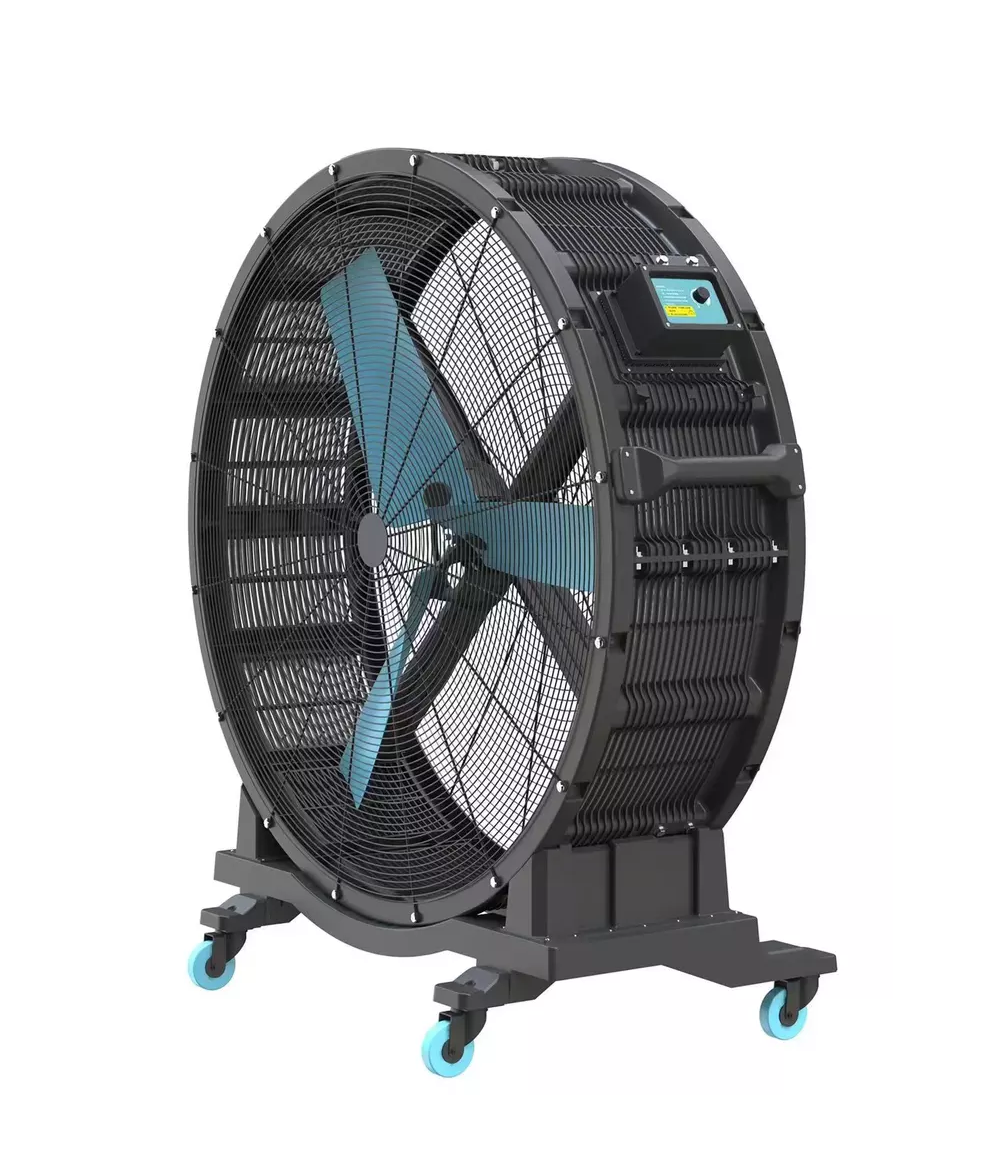Understanding Electronics Overheating and Cooling Fan Necessity
How Heat Affects Electronic Components
The temperature significantly affects the performance and life of electronic devices. Semiconductors semiconductor materials ー the essential building blocks of electronic devices ー degrade at high temperatures, resulting in loss of performance and potential failure. Researches alurming: the useful life of electronic components is typically reduced 10% for every 10°C rise in average operating temperature. And in addition, the microprocessor will be degraded over time and will slow down or even shutdown in the interest of self-preservation. Therefore, sustaining the normal temperature is very essential for normal operation and long-time work.
Consequences of Inadequate Thermal Management
Poor thermal management is not to be taken lightly as it results in anything from erratic system behavior or even permanent damage to your hardware. Failure in thermal consideration results in random crash of electronics, and considerable loss. There have been estimates that enterprises can lose millions per year to thermal related failures. Furthermore, this lack of maintenance causes such wear and tear to advance more rapidly putting components due for replacement more often. Preventing such expensive incidents to maintain the steady operation of electronic devices is critical, where the importance of the thermal management cannot be overstated.
In preventing the negative impact of overheating, cooling fans like exhaust fans, cooling fans for gaming pc and inline exhaust fans have a significant role to play. For example, appliances such as Qingdao Pengsheng Electric Appliance Co., Ltd.‘s Upblast Roof Centrifugal Extractor, provide the perfect ventilation solutions for all types of industrial applications. Sufficient cooling also minimizes the potential for heat-related damage, and provides further system stability and overall effectiveness.
Types of Cooling Fans for Electronics
Axial Fans: Basic Ventilation Solutions
If the blade can be parallel to the shaft to push wind, then Axial fan is the ideal solution for general cooling requirements with a least-expensive and low-maintenance solution that handles the lower static pressures of ventilation. They are used for Wide application, such as cooling computer, Electrical cabinet, welding machine, Model,table, experiments and other Humidifier 9025 equipment etc. 2. Axial fans are smaller and use less power than typical centrifugal fans, yet they are able to generate enough pressure to push cool air through your case with ease making them the most popular type of fans and most commonly used fan for general purpose cooling, the most likely to be seen like a ceiling fan, household fan or cooling fan in electronic devices.
Centrifugal/Inline Exhaust Fans for High-Pressure Needs
Centrifugal are more powerful fans used in high pressure applications such as large systems where a high pressure is required to move in the air. Such fans are used for example in Comcastitive_tifiand for the cooling of HVACRHZ11 system where ducted flow is required for optimal operation. Centrifugal fans actively filter and eliminate air-borne particles, for optimum air quality and equipment service life.
Roof Fans & Specialized Cooling for Industrial Applications
As roof vent fans industrial, they are built to remove heat and fumes effectively and improve building air flow. In warehouses and factories, they play an essential role in preventing overheating and improving working conditions to make a safer, more ergonomic environment. Equipped with tailor-made designs, such fans are capable of resistance to environmental influences like bad weather and reduction of noise emissions, which guarantees disturbance-free working in the industrial environment.
Cross Flow Fans in Gaming PCs and Compact Systems
Cross Flow fan provides the optimal cooling solution for small for factor PC's 4 Patented bladed are designed to generate focused airflow in angled sections 4 Twin vapor chambers give max cooling power. The sleek design cools and supports that important high-performance gear under the hood. Thanks to their ability to fit in tight cases, cross flow fans not only decrease noise but also help keep your gaming system at its best.
How Cooling Fans Prevent System Failures
Airflow Dynamics in Heat Dissipation
Air flow dynamics are important for the fiber optics and cooling systems by which hotspots are avoided in electronic equipment. Airflow management can play an important role and if used properly can increase the effect of the cooling system by 20 -- 30%. The central function of fans within such systems is to produce a steady movement in the airflow allowing for the constant extraction of hot air. This system helps to maintain critical components within their optimal operating temperatures, thus minimizing system crashes and prolonging the life of your equipment.
Synergy with Heat Sinks and Thermal Pastes
heat sink fans work in conjunction with heat sinks and thermal transformation to keep air moving around your system. All of these factors help conduct heat away from vital areas to prolong the life of the system and all of its components. It will contribute to enhance the thermal action towards the CPU as there is a maximum “gap” for the air to pass through after the CPU comes into close contact with the heat sink and it’s optimized for superior heat transfer and dissipation.Using high quality thermal paste, thermal efficiency can improve 50%, which further benefits the hourly fan heat organ with a cooling effect. With the combo, your expensive electronics will remain cool using the compact, reliable cooling fans and pads.
Case Study: Cooling Fan Efficiency in Gaming Rigs
There are case studies to suggest that an ideal cooling-fan configuration can go a long way in gaming rigs to eliminate thermal throttling bandy some pretty drastic performance improvements in the process. High end gaming machines with cooling fans see additional 15-25% performance improvements under load. Furthermore, gamers can adjust the fan speed in their preference from low to high depending on system status in order to aid in maintaining stable gaming conditions. This ability to moderate power usage prevents overheating and ensures gaming systems can continue to game for many hours.
By leveraging the right cooling solutions, we can efficiently manage heat and prevent potential system failures across various electronic applications.
Applications Across Devices and Environments
Consumer Electronics: PCs, Consoles, and Routers
Cooling fans are critical to consumer electronics such as PC, gaming console and routers etc. They see to it that these devices don’t falter in performance when under the heaviest of workloads that create heat. Without proper cooling, routers can become too hot and be a source of connection issues, downtime, etc. -- something we definitely want to avoid when most everything we do is connected to the web. Research has shown that by maintaining low operational temperatures, the lifetime of these electronics is extended beyond over 30%. This extender not only enhances the user experience, but also prevents damaging devices by reducing cable stress, and saves costs for repairs in the long run.
Industrial Uses: Servers and Manufacturing Equipment
Cooling fans are essential for upholding the integrity of the server room and other manufacturing equipment that is installed in an industrial setting. System overtemp events in these regions can cause system outages and downtime-related costs that soar to an average of $1,000 per minute. In order to avoid losses, careful fan positioning can bring a great improvement to the cooling efficiency, which can lead to up to 20% CO2 emission reductions in manufacturing.Installed fans could be smaller, cheaper and demand less power. This has the dual benefit of not just preventing expensive breakdowns, but also promoting sustainable energy consumption – an important consideration in the modern eco-savvy industrial environment.
Emerging HVAC Integration with Smart Fans
Incorporation of smart fan technologies in HVAC systems is a key feature as an innovative energy-efficient cooling solution. These intelligent fans can adjust to real time room conditions, reducing energy usage by 40% compared to immortal cooling systems. With the growing prevalence of smart buildings, the ability to modulate in response to changes in ambient conditions represents a new and exciting approach to adaptive and efficient thermal management. This trend points to a future in which cooling systems adapt in real time to occupant numbers and outside temperatures to optimize comfort and energy use.
Advancements in Cooling Technology
Hybrid Systems: Combining Fans with Vapor Chambers
Hybrid cooling technologies are a significant step up from the fans plus vapor chambers. Together, this setup enables optimal heat dissipation efficiency for the most demanding high performance computing workloads, where thermal output is a concern. Recent tests underline the usefulness of these systems, they have been proven to limit temperature spikes of parts by 30% or more. The fan and vapor chamber tech merging is the tech path that will provide more complicated, smarter and better cooling solutions across other tech based industries to keep things going at their optimal levels.
Energy-Efficient Designs for Sustainable Cooling
The development toward energy saving fan design is one of the key sources to ensure economic and ecologic operation. These fans can achieve a much lower level of energy consumption and research suggests savings of 25-50% is possible over traditional counterparts. This change to green cooling is not just about the environment and more about such things as compliance and lower costs in the longer term. In efforts to reduce CO2 footprint, energy saving cooling systems become increasingly significant, serving as a connecting link between economy and ecology.

